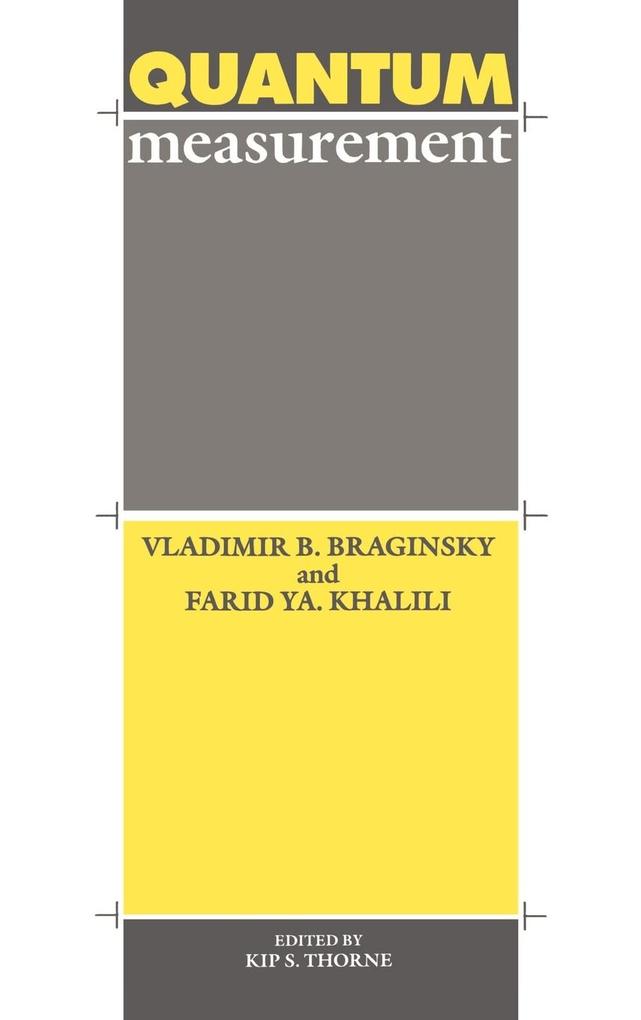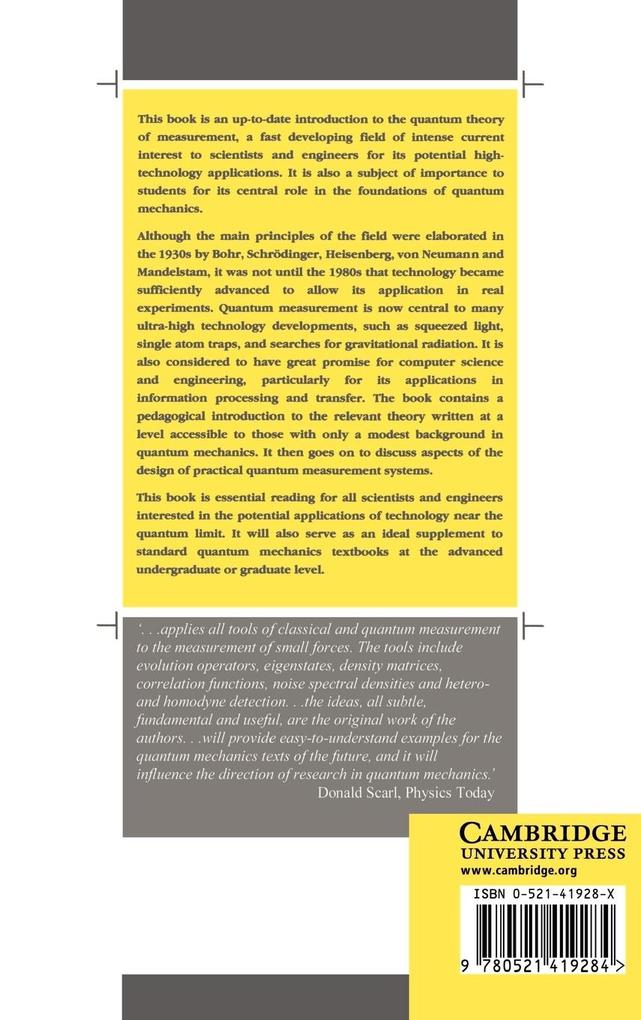
Zustellung: Do, 17.07. - Mo, 21.07.
Versand in 7 Tagen
VersandkostenfreiThis book is an up-to-date introduction to the quantum theory of measurement. Although the main principles of the field were elaborated in the 1930s by Bohr, Schrödinger, Heisenberg, von Neuman, and Mandelstam, it was not until the 1980s that technology became sufficiently advanced to allow its application in real experiments. Quantum measurement is now central to many ultra-high technology developments, such as "squeezed light," single atom traps, and searches for gravitational radiation. It is also considered to have great promise for computer science and engineering, particularly for its applications in information processing and transfer. The book begins with a brief introduction to the relevant theory and goes on to discuss all aspects of the design of practical quantum measurement systems.
Inhaltsverzeichnis
Editor's foreword; Notation; 1. Historical introduction: photons and measurements using photons; 2. The main principles of quantum mechanics; 3. Indirect measurements; 4. Quantum nondemolition measurements; 5. Linear measurements; 6. Continuous linear measurements; 7. Nonlinear systems for continuous measurements; 8. Detection of classical forces; 9. Energetic quantum limitations; 10. Devices for measuring small mechanical displacements; 11. Quantum nondemolition measurements of a resonator's energy; 12. Nonclassical states of electromagnetic waves as tools for quantum measurements; Conclusion; References; Subject index.
Produktdetails
Erscheinungsdatum
18. Oktober 2003
Sprache
englisch
Seitenanzahl
212
Autor/Autorin
Vladimir B. Braginsky, Farid YA Khalili, Kip S. Thorne
Verlag/Hersteller
Produktart
gebunden
Gewicht
502 g
Größe (L/B/H)
235/157/17 mm
ISBN
9780521419284
Entdecken Sie mehr
Pressestimmen
' ... applies all tools of classical and quantum measurement to the measurement of small forces. The tools include evolution operators, eigenstates, density matrices, correlation functions, noise spectral densities and hetero- and homodyne detection ... the ideas, all subtle, fundamental and useful, are the original work of the authors ... will provide easy-to-understand examples for the quantum mechanics texts of the future, and it will influence the direction of research in quantum mechanics.' Donald Searl, Physics Today
Bewertungen
0 Bewertungen
Es wurden noch keine Bewertungen abgegeben. Schreiben Sie die erste Bewertung zu "Quantum Measurement" und helfen Sie damit anderen bei der Kaufentscheidung.








